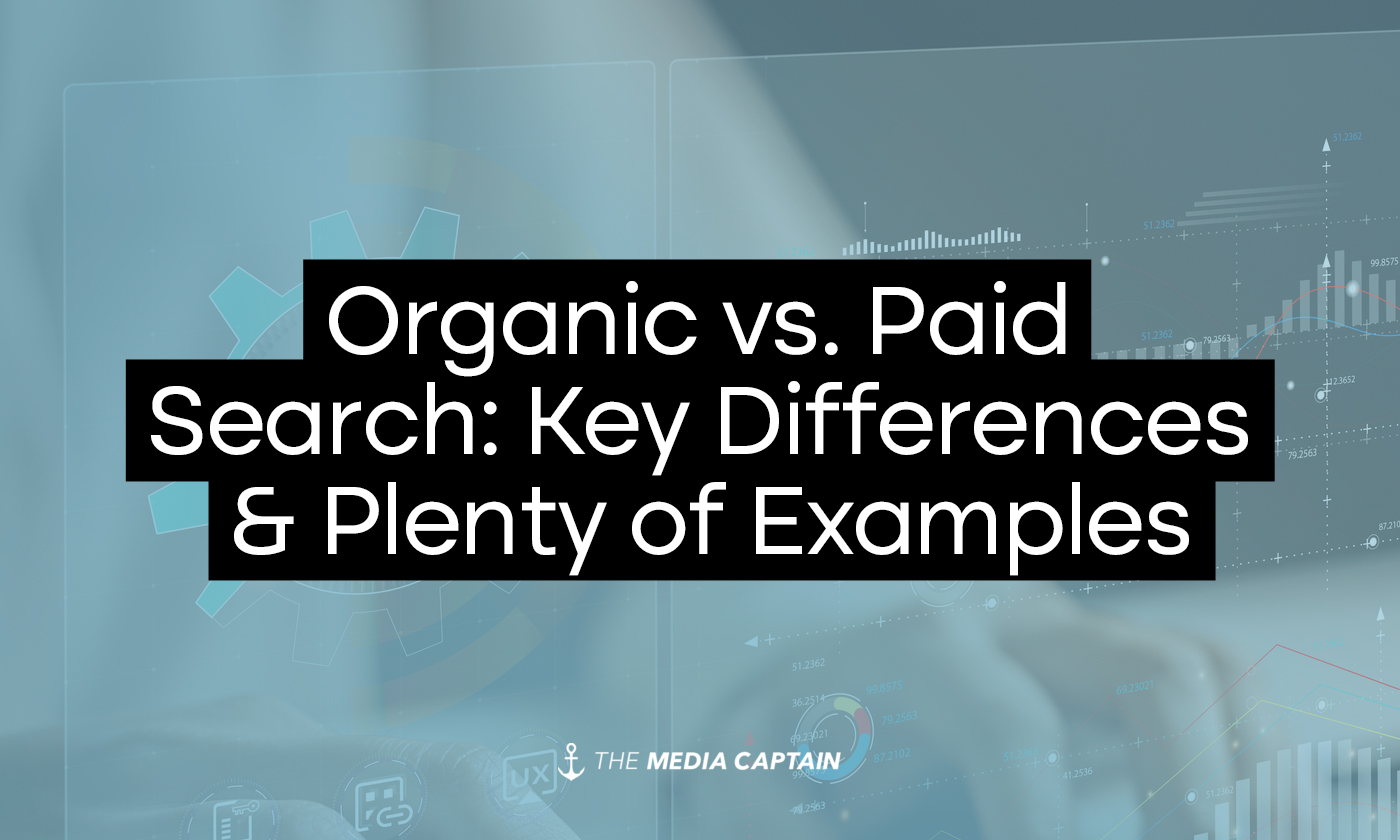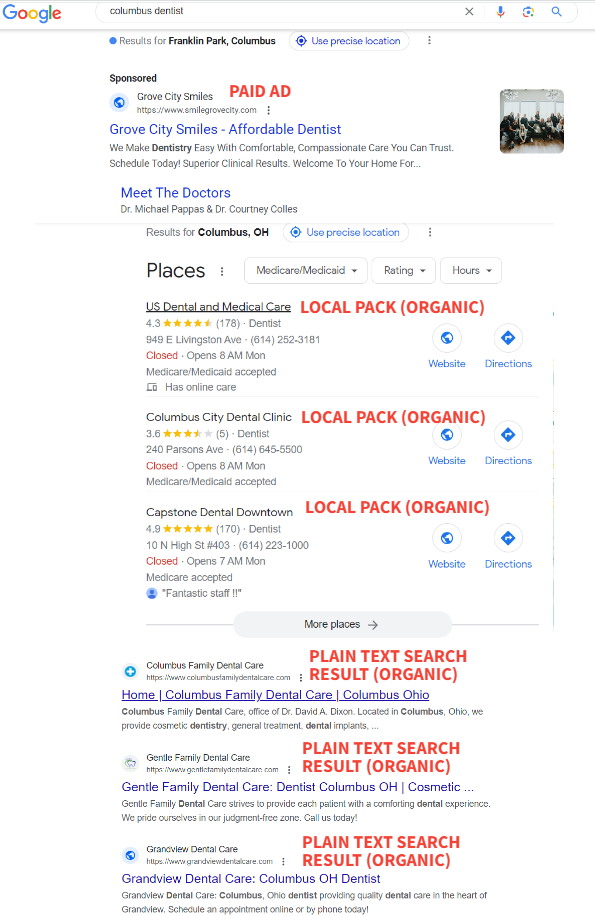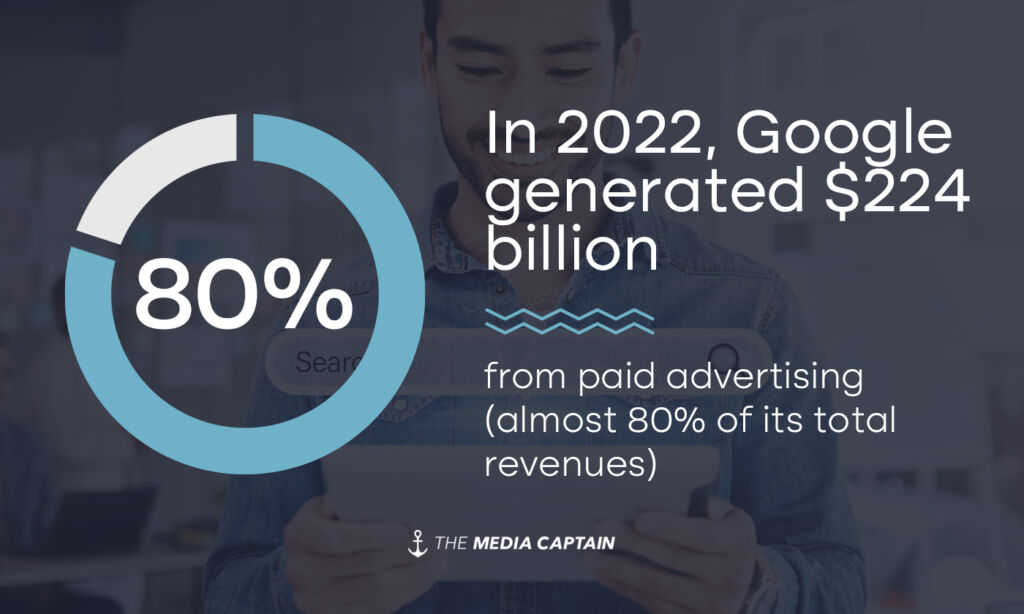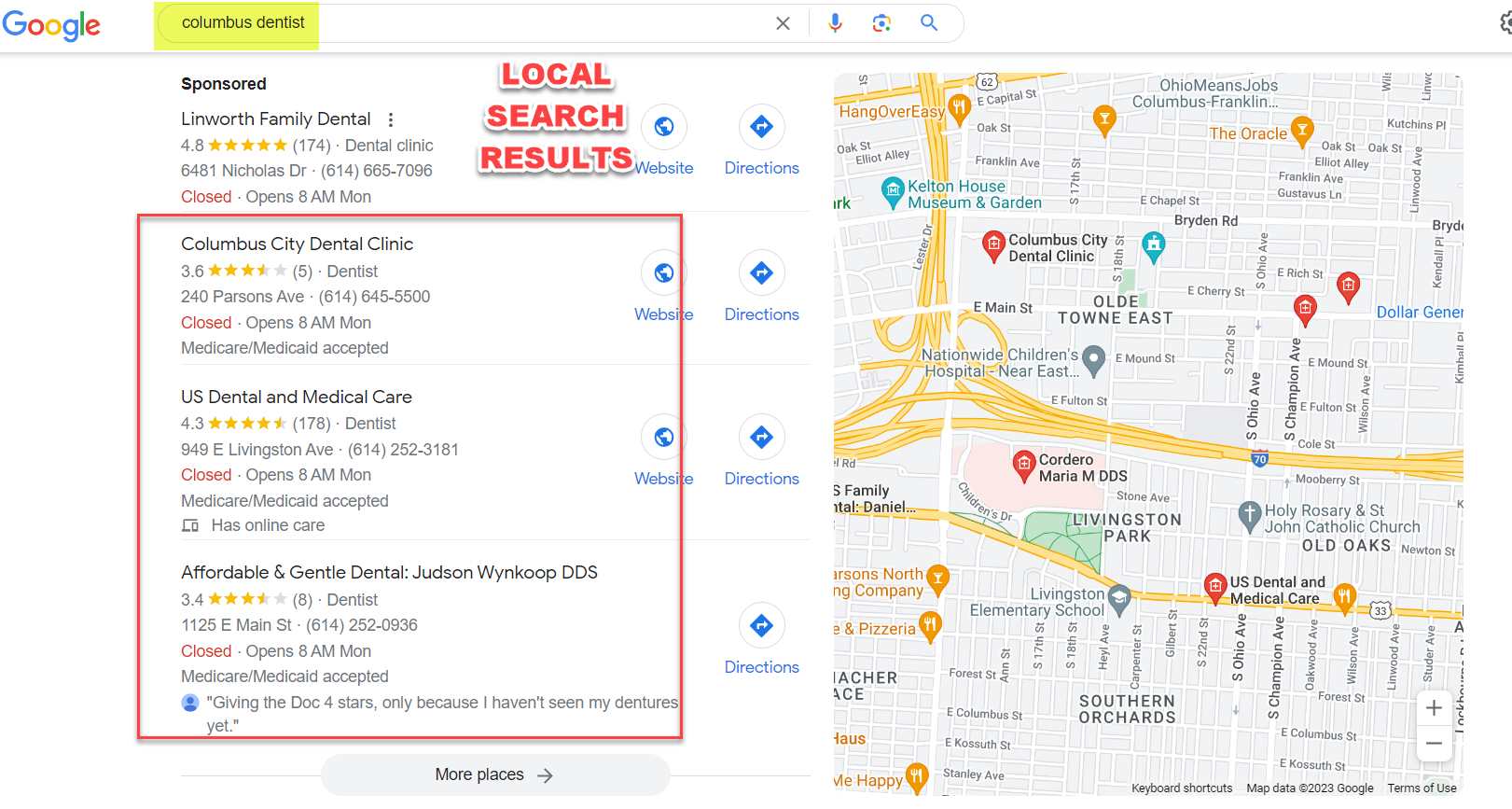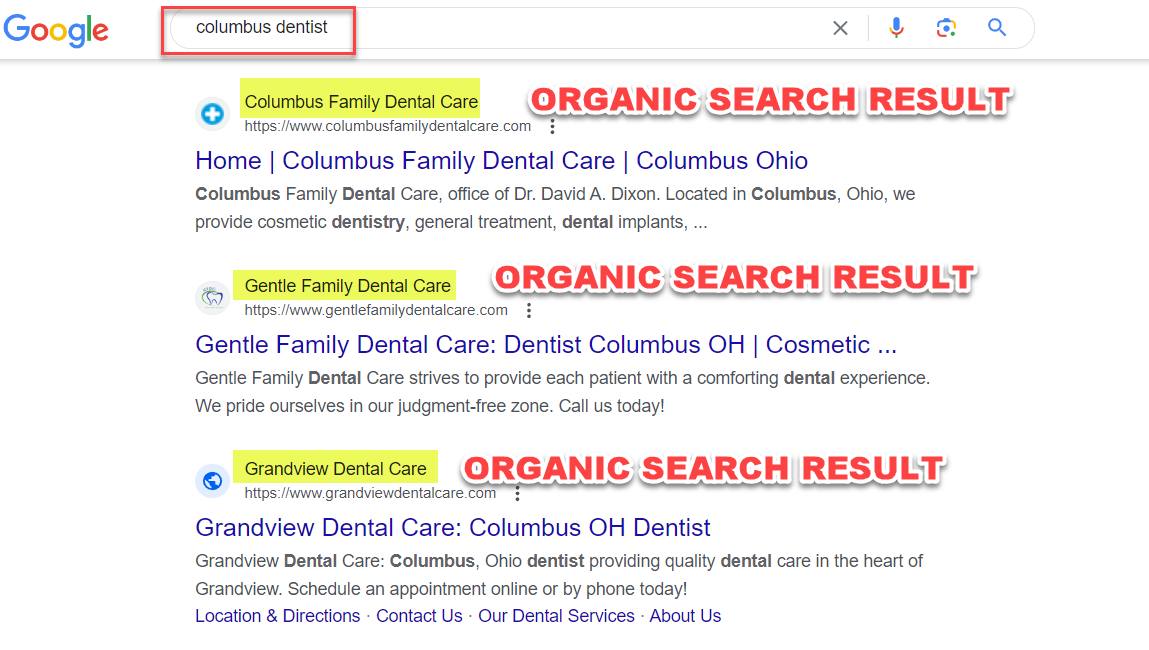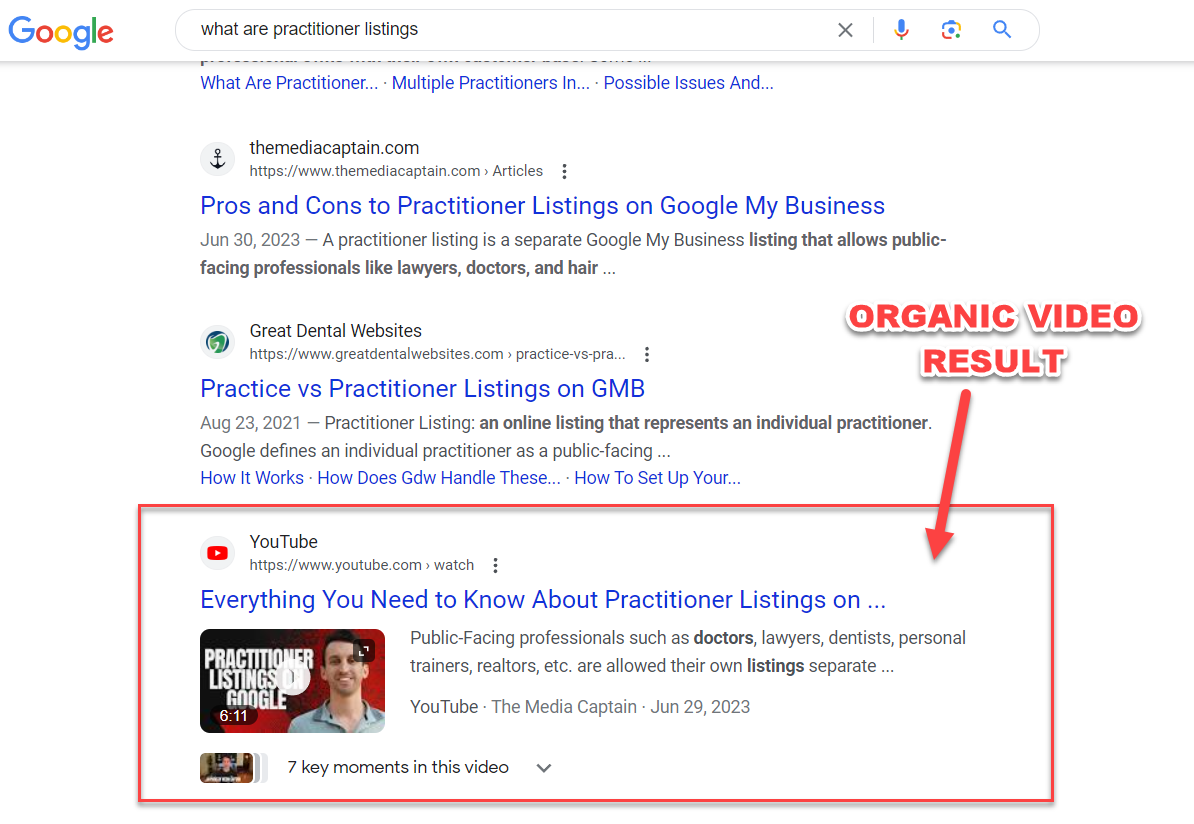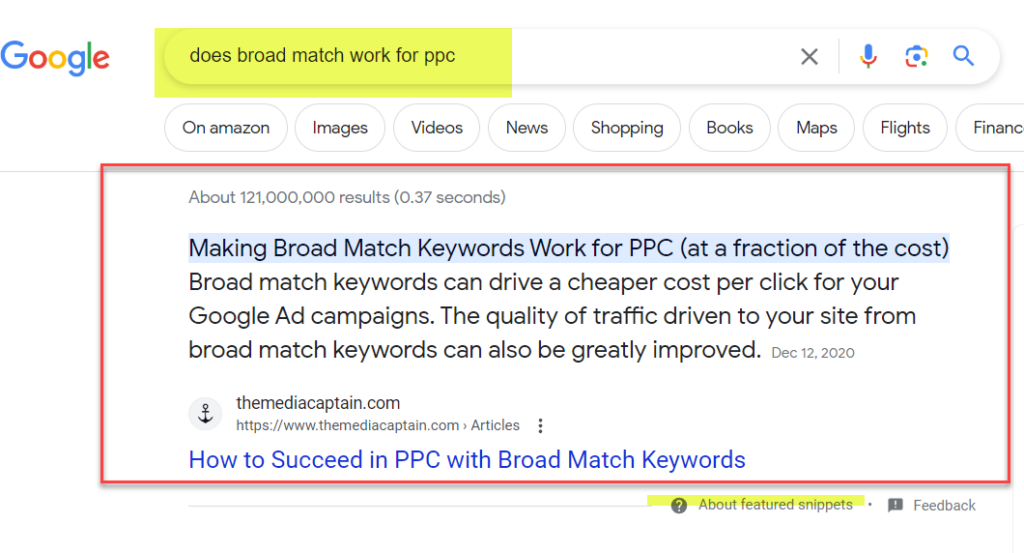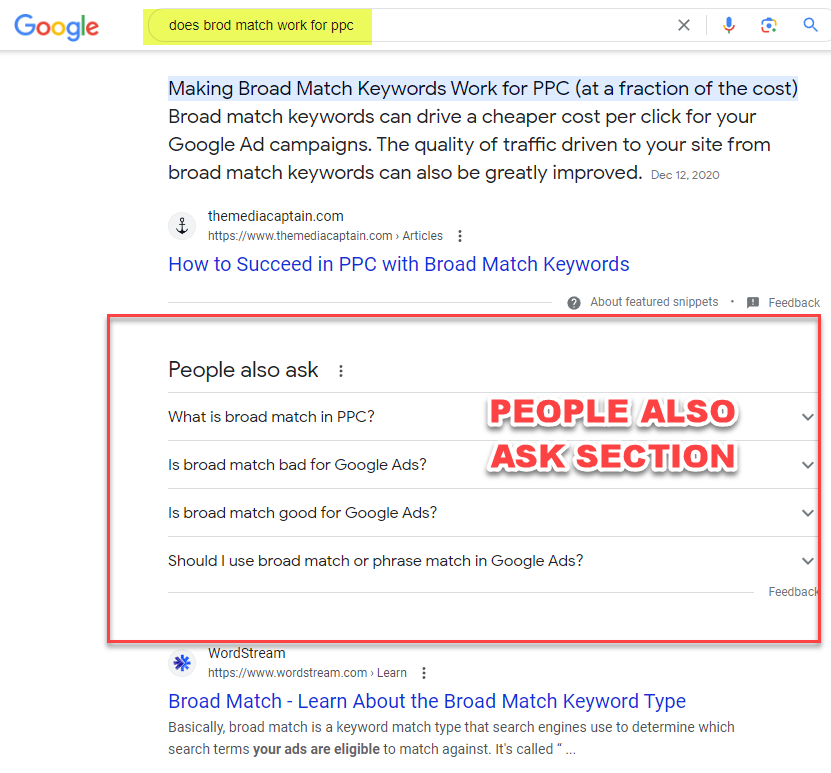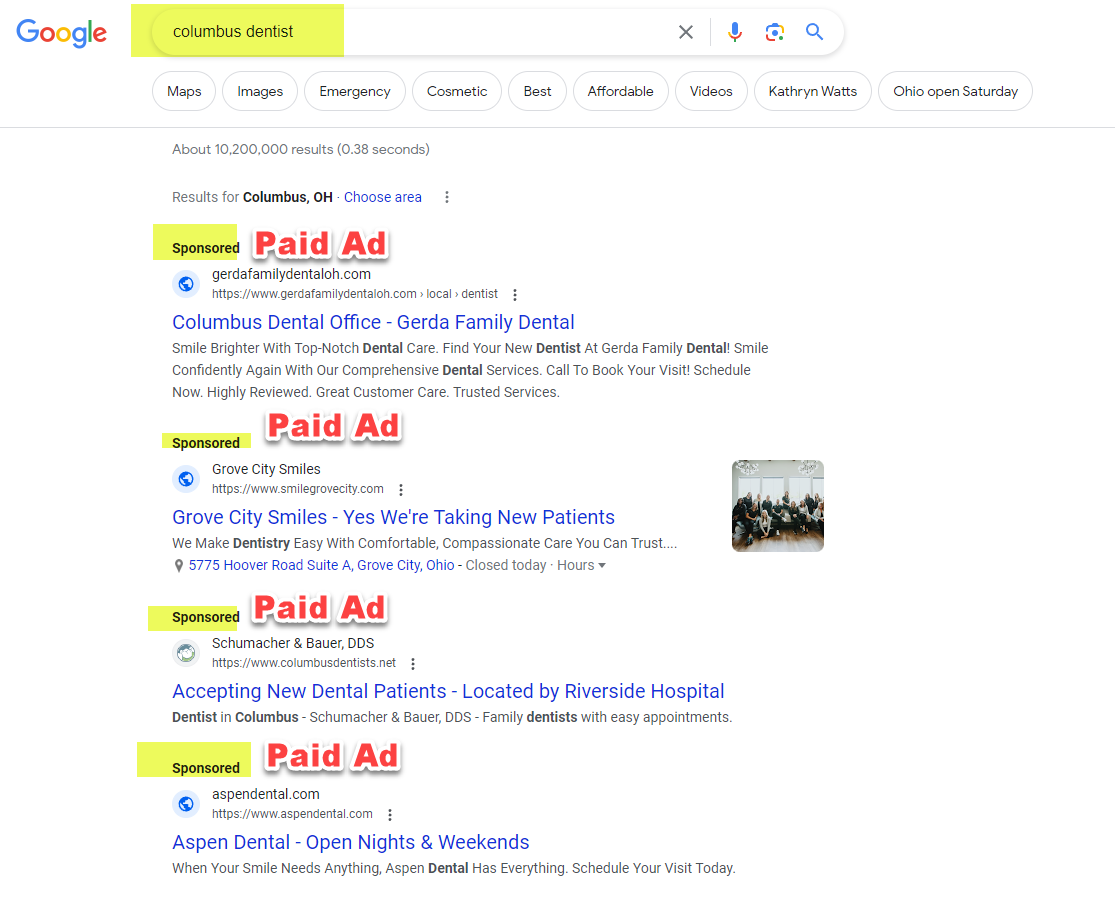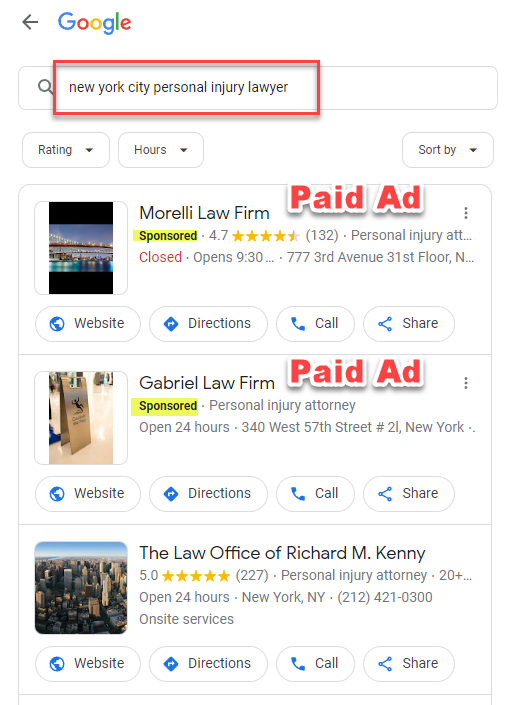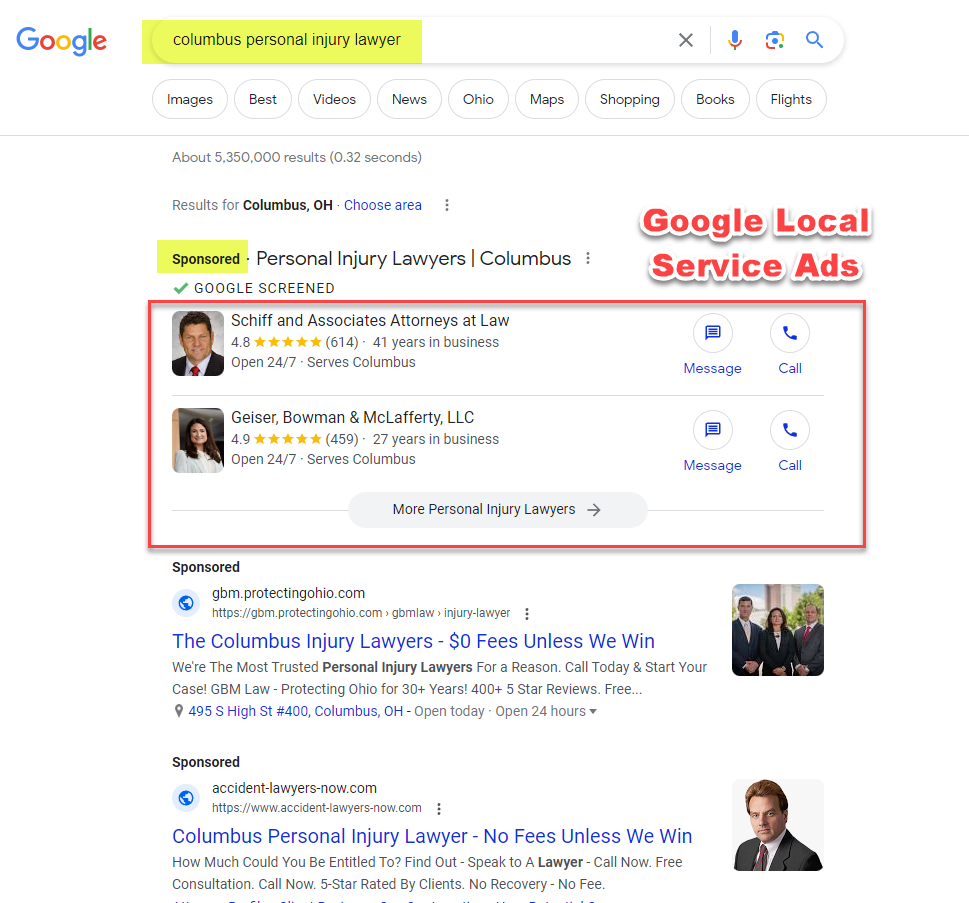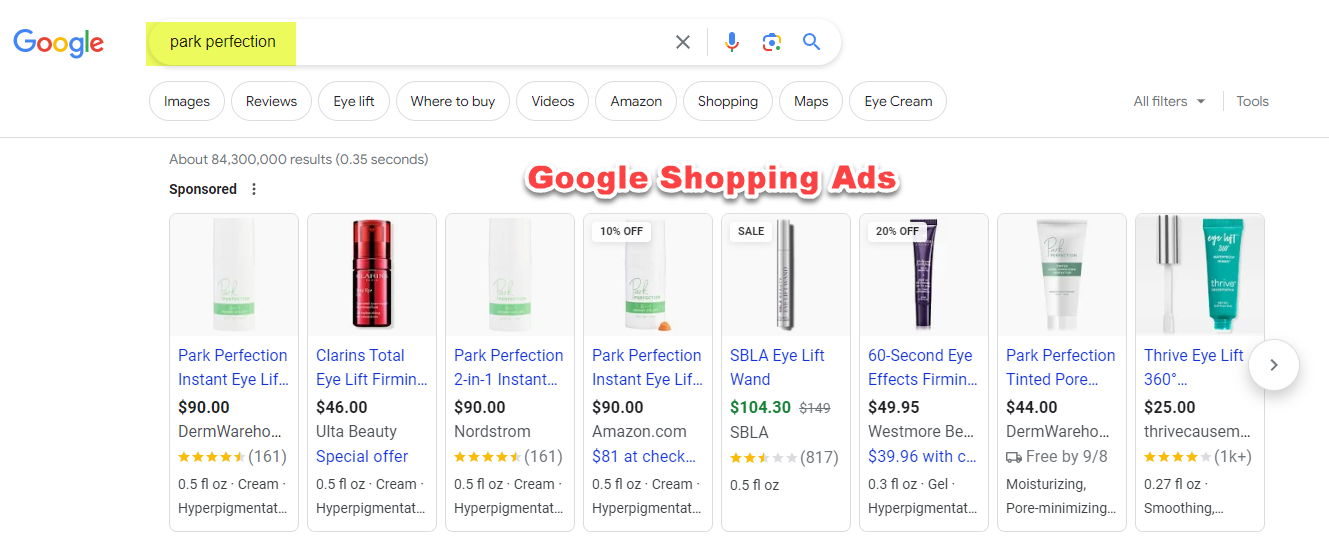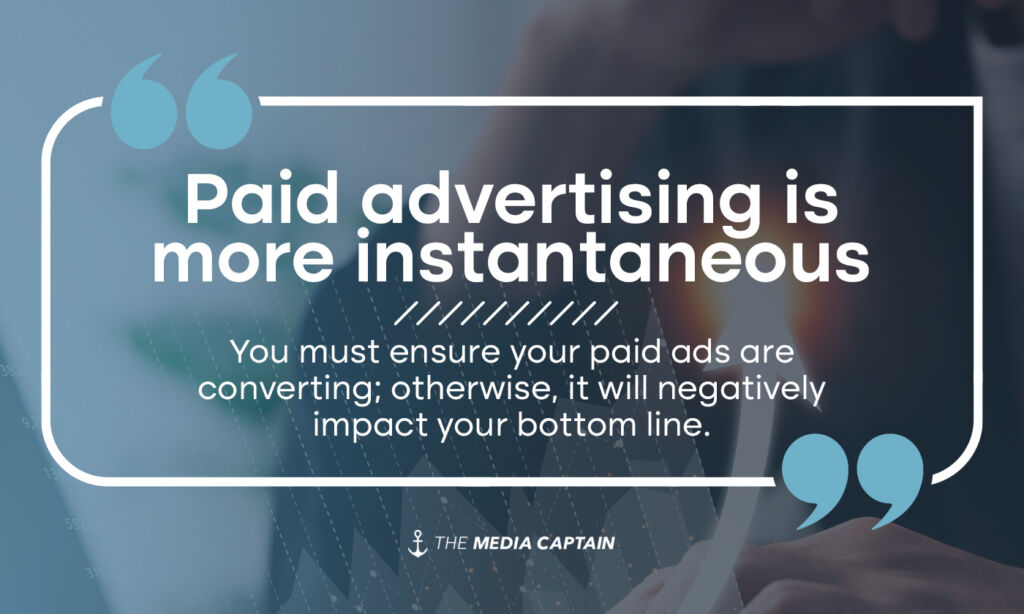The first page of Google is competitive. It’s comprised of many SERPs, search engine result pages. There are organic and paid results, viable real estate that digital marketers covet.
What’s the difference between organic vs. paid? With Organic results, you don’t have to pay for each click; it’s earned placement. For paid advertisements, you pay for each click or, in some instances, for each lead.
There are many ways to rank on the first page of Google, both organically and paid. After reading this article and viewing the examples, you’ll have a new appreciation of how to get your business to appear more frequently on the first page of Google.
Table of Contents
- 1 Is Organic or Paid Search on Google Better?
- 2 Understanding Organic
- 3 Examples of Different Types of Organic Exposure
- 4 Understanding Paid Traffic
- 5 Conclusion
Is Organic or Paid Search on Google Better?
In 2022, Google generated $224 billion from paid advertising (almost 80% of its total revenues) [source]. Google Ads is the money-making machine for Google. The compelling content within organic search results drives 2.3 million searches per minute on Google [source]. 63% of people have clicked on a Google advertisement at one time or another [source].
Many digital marketers say that organic is better because it’s more profitable. Alternatively, paid advertisements are great because you can drive traffic to your site overnight. A blended approach between organic and paid is recommended.
Understanding Organic
Ranking organically doesn’t happen overnight; it’s a longer process. Organic can be extremely profitable since you don’t have to pay for each click.
The most coveted query for a dental practice in Columbus is “Columbus Dentist.” Rather than paying $7-$10 per click for this competitive keyword, the traffic to their site is essentially free since they’ve earned this organic placement. This is why digital marketers covet SEO and ranking well organically on Google.
The issue with organic is that it can take a long time to rank well. If you are a brand-new dental practice, it will likely be at least a year before you can rank in the top spot for some of your most coveted keywords. The reason is that your site needs to establish authority.
All businesses dream of a scenario where they rank so well for every keyword that they can become less reliant on paid traffic.
Let’s dive into the different ways your business can appear organically on the first page of Google.
Examples of Different Types of Organic Exposure
Google’s Local Pack
The local pack features local businesses. This information is pulled from your Google My Business page. This is valuable real estate since it appears at the top of Google and showcases bright, prominent reviews. These results can vary based on the location of where the search takes place. The local pack is great for local businesses looking for exposure.
How to Rank in the Local Pack
- Create a Google Business Profile and update all key information within the profile.
- Get reviews
- Pick a relevant primary category
Related Blog: Better Optimize Your Google My Business Page
Plain Text Search Results
The plain text search results with the blue title and underlying black description. The business name, logo, and URL are associated with the plain text search results.
The old joke in the SEO world is the best place to bury a dead body is the second page of Google since nobody will find it there. The top 5 search results on Google get 70% of the clicks [source]. Businesses covet ranking highly in the top ten plain text search results.
How to Rank in Plain Text Search Results
- Create content that answers questions based on what people are searching for
- Make sure the content is well-written and informative
- Increase authority to your site so it outranks competitors with similar content
Video Rich Results
Google owns YouTube. They reward people for uploading videos to YouTube by showcasing them on the first page of Google in the video-rich results. Not all videos make it to the first page of Google, but it’s great real estate if you populate it with a video-rich result.
In the example below, you will see a video I recorded on practitioner listings on Google that populates in the video-rich results. Above this, I also have my blog populating! This means that I have numerous pieces of real estate ranking on the first page of Google.
How to Rank Videos on Google
- Record great, relevant content
- Upload videos consistently
- Embed videos on relevant pages on your website
Related Article: How to Optimize for YouTube
Featured Snippets
Featured snippets are highlighted excerpts of text that appear at the top of a Google search results page in what is known as ‘Position 0’. Featured snippets provide users with quick answers to their queries. This is generally for an informational query. Rather than having to click on a website, a featured snippet gives you the information without clicking for more details.
Featured snippets are coveted real estate since they are the first thing someone will see on Google.
How to Rank for Featured Snippets
- Do research for questions people are asking
- Provide definitive, concise, quality answers
People Also Ask
People Also Ask (PAA) is a Google SERP feature that provides users with additional questions related to their original search query and quick answers to them.
While the featured snippet only shows one quick answer to the query, the people also ask is bundled where there are numerous selections.
How to Rank for People Also Ask
- Like the featured snippet, you want to research questions people will be asking and provide answers to the original queries within your content.
Related Article: How to Populate in the People Also Ask Section
Other Ways To Rank Organically
There are other ways to rank organically on the first page of Google. The examples listed above are the most popular ways our clients generate organic traffic, but I didn’t want to leave others off the list. You can view the entire list on Search Engine Journal:
- Event Rich Snippet
- Review Snippet
- Carousel Rich Snippet
- Data Snippet Table
- Top Story Carousels
Understanding Paid Traffic
Numerous types of paid advertisements appear on the first page of Google. When there is a paid advertisement, it will have the word “sponsored” in front of it to signify that this is paid. Depending on your industry, different types of ads will populate. For example, for eCommerce, shopping ads are more prominent. For attorneys, local service ads frequently appear at the top of Google.
Over the years, many complaints have been that the word “sponsored” has become harder to decipher, so people can’t differentiate between organic and paid. People have also been upset that the first page of Google now consists of so many paid ads that it takes a long time to find an organic listing.
It’s hard to argue the success of paid advertisements. 65% of people click on ads when they want to purchase [source]. The intent is high for paid advertisements. So many businesses advertise with Google because it drives new leads and sales for them. Let’s dive into the different types of paid advertisements.
Standard PPC Advertisements
The standard PPC advertisement looks similar to the plain text organic search result. You bid on specific keywords, and your advertisement only populates if someone searches for this keyword (or a slight variation of it) and then clicks on your ad.
In the example below, five paid advertisements populate before any organic listing. Many people click on these advertisements without even realizing they are paid ads.
With PPC advertisements, in addition to the headline and body copy within the text, you can add sitelinks, callouts, image, call, and location extensions to the advertisement. With limited real estate on the first page of Google, a PPC advertisement is a good way to ensure your result will be listed near the top.
Local Listing Advertisement
There are paid advertisements associated with local listings. This is a great way to populate in the local pack, where only three businesses are listed. If you turn on location extensions and sync your Google Business Profile within your Google Ads account, you can rank in the local pack for your advertisements.
Google Local Service Ads
For Google Local Service Ads or (LSA’s), advertisers only pay if a customer contacts you directly through the ad. Rather than paying per click, you are paying per lead.
There are now 70 business types that are eligible for Google Local Service Ads. To get approved, you must undergo a background check and submit information about your license and registration. Some of the first business types to appear in local service ads were attorneys, plumbers, and locksmiths.
The local service ads appear above the organic results and the PPC advertisements. They are prominent based on the headshot and reviews.
Related Blogs:
Google Shopping
Google Shopping ads are image-based advertisements that showcase the product you are looking to sell in an image-type format. Along with your product image, the price, name of the product, name of your store, and reviews also populate. Unlike PPC Ads, which are keyword-driven, your Shopping Ads populate through the information within your Google Merchant Center account.
Shopping Ads are generally less expensive than standard PPC advertisements. The average Cost per click of Google Shopping is $0.66. Google Ads average of $1.16 CPC for eCommerce stores (source). Google Shopping provides a great way for eCommerce brands to drive more revenue.
Other Types of Advertisements
I covered all the advertisements that populate on the first page of Google. Display and video ads can also be set up within Google Ads. These sorts of advertisements don’t appear on the first page of Google, but they provide a great way to drive awareness through YouTube and Google’s Display Network.
Conclusion
Ranking organically doesn’t happen overnight. It’s a long process, but can be rewarded based on the profitability of not paying per click.
Paid advertising is more instantaneous. You must ensure your paid ads are converting; otherwise, it will negatively impact your bottom line.
A diversified approach where organic and paid complement one another is the strategy I recommend. The more exposure you have on the first page of Google, the better. This can be accomplished through a blended approach of paid and organic.


